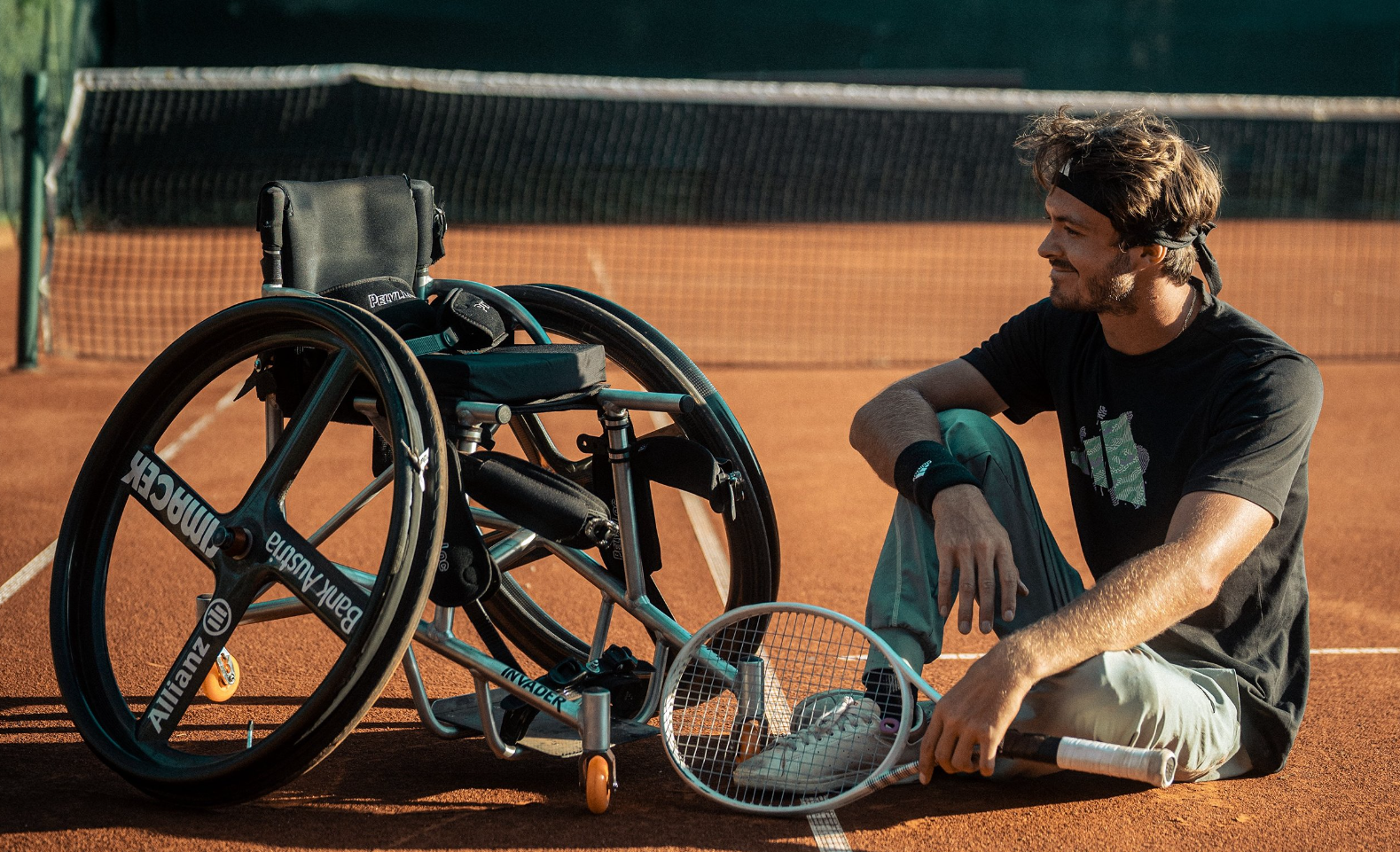The Paralympic Games have always been a symbol of resilience, determination, and the indomitable spirit of athletes who push beyond the boundaries of what many consider possible. Among the various sports featured in the Paralympics, wheelchair tennis holds a unique place, blending the elegance and intensity of traditional tennis with the incredible athleticism of competitors who navigate the court on wheels. As the world gears up for the Paralympics 2024 in Paris, anticipation is building around the wheelchair tennis events. This article delves deep into the history, key players, preparation strategies, and future prospects of wheelchair tennis at the upcoming Games.
Daftar Isi
The Evolution of Wheelchair Tennis at the Paralympics
Wheelchair tennis first appeared as a demonstration sport at the 1988 Seoul Paralympics before becoming an official medal event at the 1992 Barcelona Games. Since then, it has grown into one of the most popular and competitive sports within the Paralympic movement. The sport’s blend of speed, strategy, and skill, combined with the athletes’ ability to maneuver their wheelchairs with incredible precision, has captivated audiences worldwide.
The Early Days and Growing Popularity
In the early days, wheelchair tennis was largely driven by passionate individuals and small communities. However, its inclusion in the Paralympics brought it to a global audience, and the sport quickly gained traction. The early pioneers of the sport laid the groundwork for its current status, and their legacy continues to inspire new generations of athletes.
Over the years, the sport has evolved, with improvements in wheelchair technology, training methodologies, and the overall competitiveness of the athletes. The rules of wheelchair tennis are very similar to able-bodied tennis, with one key exception: players are allowed two bounces of the ball, with the first bounce required to be within the court. This slight modification preserves the fast-paced, high-intensity nature of the game, making it both challenging for the players and thrilling for the spectators.
The Impact of Technology on the Sport
Technological advancements have played a significant role in the evolution of wheelchair tennis. Modern sports wheelchairs are designed to be lightweight, durable, and highly maneuverable, allowing athletes to move quickly and efficiently around the court. These advancements have not only improved performance but have also increased the accessibility of the sport, enabling more people with disabilities to participate at both recreational and competitive levels.
The role of technology extends beyond just the equipment. Innovations in training techniques, sports analytics, and injury prevention have also contributed to the increasing competitiveness of wheelchair tennis. As we approach the Paralympics 2024, these advancements will be on full display, pushing athletes to achieve new levels of performance.
Key Athletes to Watch in 2024
As the Paralympics 2024 draws near, all eyes are on the athletes who have dedicated their lives to mastering the art of wheelchair tennis. These competitors come from diverse backgrounds and bring a range of experiences to the court, but they all share a common goal: to win gold in Paris.
Alfie Hewett (Great Britain): Alfie Hewett is a name that resonates with tennis fans around the world. At just 26 years old, he has already achieved an impressive career, including multiple Grand Slam titles and a silver medal at the 2016 Rio Paralympics. Known for his agility, powerful backhand, and tactical intelligence, Hewett is one of the top contenders for the gold medal in Paris. His journey to the top has been marked by determination and resilience, qualities that will be crucial in the highly competitive environment of the 2024 Paralympics.
Diede de Groot (Netherlands): In the women’s division, Diede de Groot is a force to be reckoned with. As the reigning world number one and a dominant player on the international circuit, de Groot has consistently proven herself as one of the best in the sport. Her powerful serve, precise volleys, and ability to stay calm under pressure make her a favorite for the gold medal in Paris. De Groot’s success is a testament to her relentless work ethic and her ability to perform at her best when it matters most.
Shingo Kunieda (Japan): Shingo Kunieda is a legend in wheelchair tennis. With a career spanning over two decades, Kunieda has amassed numerous titles, including multiple Paralympic gold medals and Grand Slam victories. His experience, strategic play, and incredible endurance make him a formidable opponent on the court. As he approaches what may be his final Paralympics, Kunieda will undoubtedly be motivated to leave a lasting legacy by adding another gold medal to his collection.
Rising Stars
While the established stars of wheelchair tennis are always a major draw, the Paralympics 2024 will also highlight several rising talents who are poised to make a significant impact. These young athletes bring fresh energy, innovative play styles, and a hunger to prove themselves on the world stage.
Niels Vink (Netherlands): Niels Vink is one of the most exciting young talents in wheelchair tennis today. At just 21 years old, Vink has already made a name for himself with his quick reflexes, aggressive play, and unyielding determination. His rise through the ranks has been meteoric, and many see him as a future star of the sport. Vink’s performance in Paris will be closely watched as he seeks to challenge the established order and secure his place among the elite.
Yui Kamiji (Japan): Yui Kamiji is another rising star who has been steadily climbing the ranks in the women’s division. Her speed on the court, combined with her sharp tactical mind, makes her a formidable competitor. Kamiji has already achieved significant success on the international stage, and she will be looking to build on that momentum in Paris. Her ability to adapt and thrive under pressure will be key to her success at the Paralympics 2024.
The Road to Paris: Challenges and Preparations
The journey to the Paralympics 2024 is fraught with challenges, both physical and mental. Athletes must undergo rigorous training regimens, navigate the pressures of competition, and manage the unique demands of wheelchair tennis. Their preparations are not just about honing their skills but also about ensuring they are in peak condition—both physically and mentally—when the Games begin.
Training Regimens
Training for wheelchair tennis is an intense and multifaceted process. Athletes must develop a combination of strength, endurance, agility, and skill to compete at the highest level. This involves a variety of exercises and drills designed to enhance their performance on the court.
Strength training is crucial, as it allows athletes to generate the power needed for serves, groundstrokes, and quick movements around the court. Upper body strength, in particular, is vital, given the demands of maneuvering the wheelchair while maintaining control of the racket.
Endurance training is equally important, as wheelchair tennis matches can be long and physically demanding. Athletes work on building their stamina through cardiovascular exercises and interval training, ensuring they can maintain a high level of performance throughout the match.
Agility drills are designed to improve the athletes’ ability to move quickly and efficiently in their wheelchairs. These drills focus on speed, reaction time, and the ability to change direction rapidly, all of which are essential for success in wheelchair tennis.
In addition to these physical aspects, athletes also spend significant time practicing their tennis skills. This includes everything from serving and returning to mastering different shot types and strategies. The goal is to develop a well-rounded game that can adapt to different opponents and match situations.
Mental Preparation
Beyond the physical challenges, mental preparation plays a crucial role in an athlete’s success at the Paralympics 2024. Competing at such a high level requires not only skill and fitness but also the mental toughness to handle pressure, stay focused, and bounce back from setbacks.
Many athletes work with sports psychologists to develop mental strategies that help them stay calm and composed during matches. This might include visualization techniques, mindfulness practices, and routines that help them manage nerves and maintain concentration.
Resilience is another key aspect of mental preparation. Wheelchair tennis players, like all athletes, face ups and downs throughout their careers. The ability to overcome adversity, whether it’s an injury, a tough loss, or external pressures, is essential for long-term success.
As the Paralympics 2024 approach, athletes will continue to refine their mental and physical preparation, ensuring they are ready to perform at their best when the time comes.
The Future of Wheelchair Tennis Beyond 2024
While the Paralympics 2024 will undoubtedly be a highlight, the future of wheelchair tennis looks even brighter. The sport continues to grow in popularity, with more countries participating and more fans tuning in. This expansion is supported by ongoing advancements in technology, training, and inclusivity, all of which contribute to the sport’s evolving landscape.
Technological Innovations
One of the most exciting aspects of wheelchair tennis is the continuous innovation in wheelchair technology. Manufacturers are constantly working to develop lighter, stronger, and more responsive wheelchairs that enhance an athlete’s performance. These advancements allow players to move more quickly, change direction more easily, and execute more complex shots.
In addition to wheelchair design, other technological innovations are making their way into the sport. For example, data analytics is becoming increasingly important, with coaches and players using data to analyze opponents, refine strategies, and track performance. Wearable technology is also being used to monitor an athlete’s physical condition in real-time, helping to prevent injuries and optimize training.
These technological advancements are helping to push the boundaries of what is possible in wheelchair tennis, making the sport more competitive and exciting than ever before.
Expanding the Global Reach
Another key factor in the future of wheelchair tennis is its expanding global reach. The Paralympic movement has done much to raise awareness of the sport, and its inclusion in major international tournaments has further increased its visibility. As more people around the world become aware of wheelchair tennis, the sport is likely to see continued growth in participation and fan engagement.
This global expansion is not just about numbers; it’s also about breaking down barriers and changing perceptions. Wheelchair tennis is helping to challenge stereotypes about disability and showcase the incredible athleticism and determination of its players. As more people see what these athletes are capable of, the sport will continue to inspire and attract new fans and participants.
Publisher By : Roperzh













